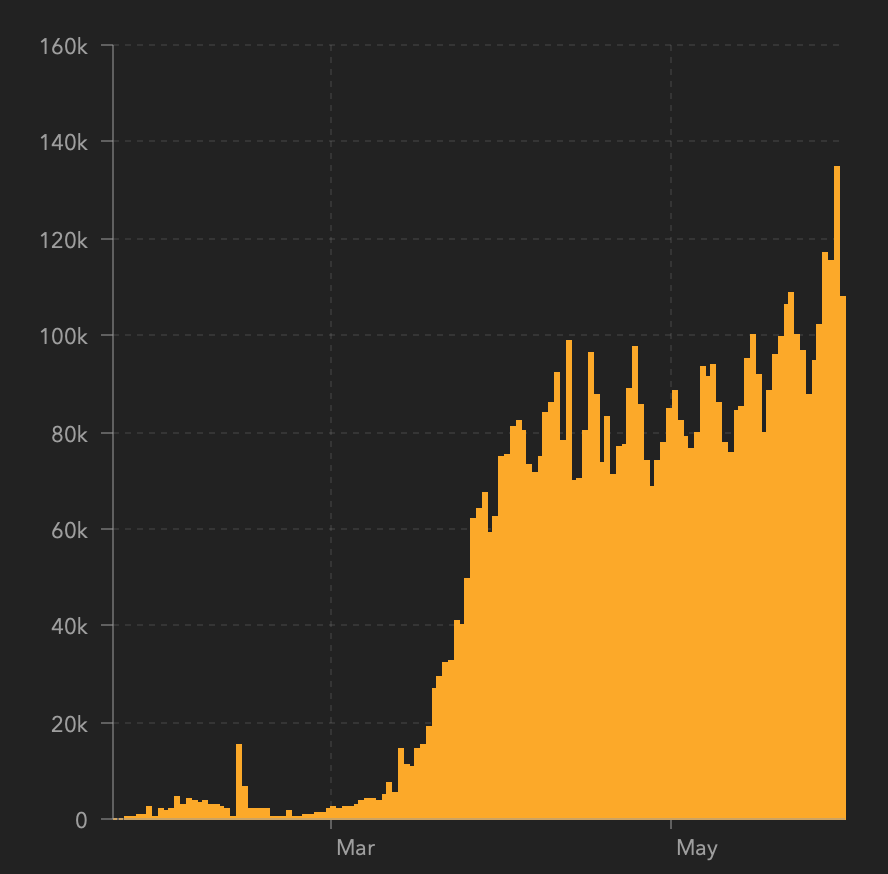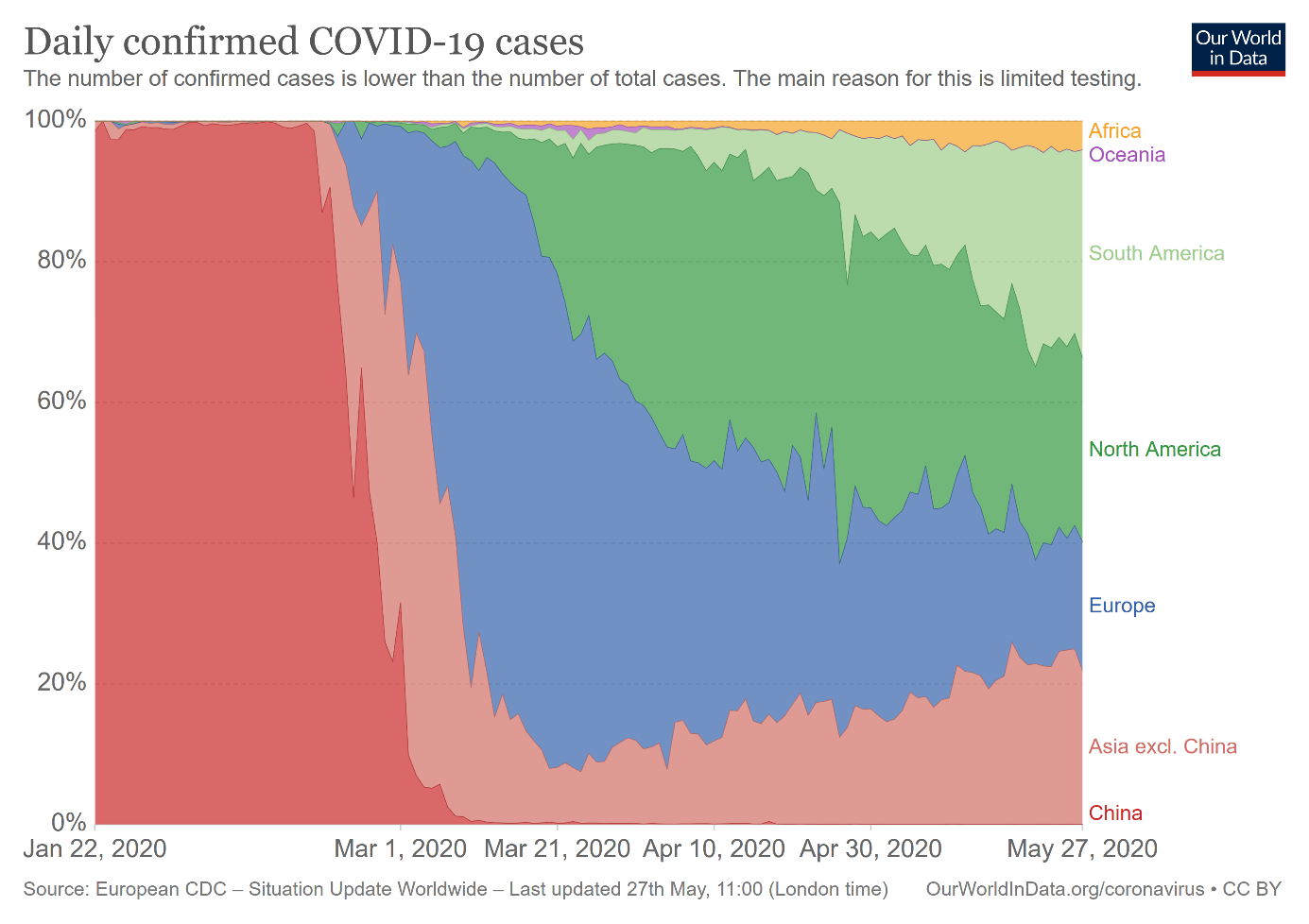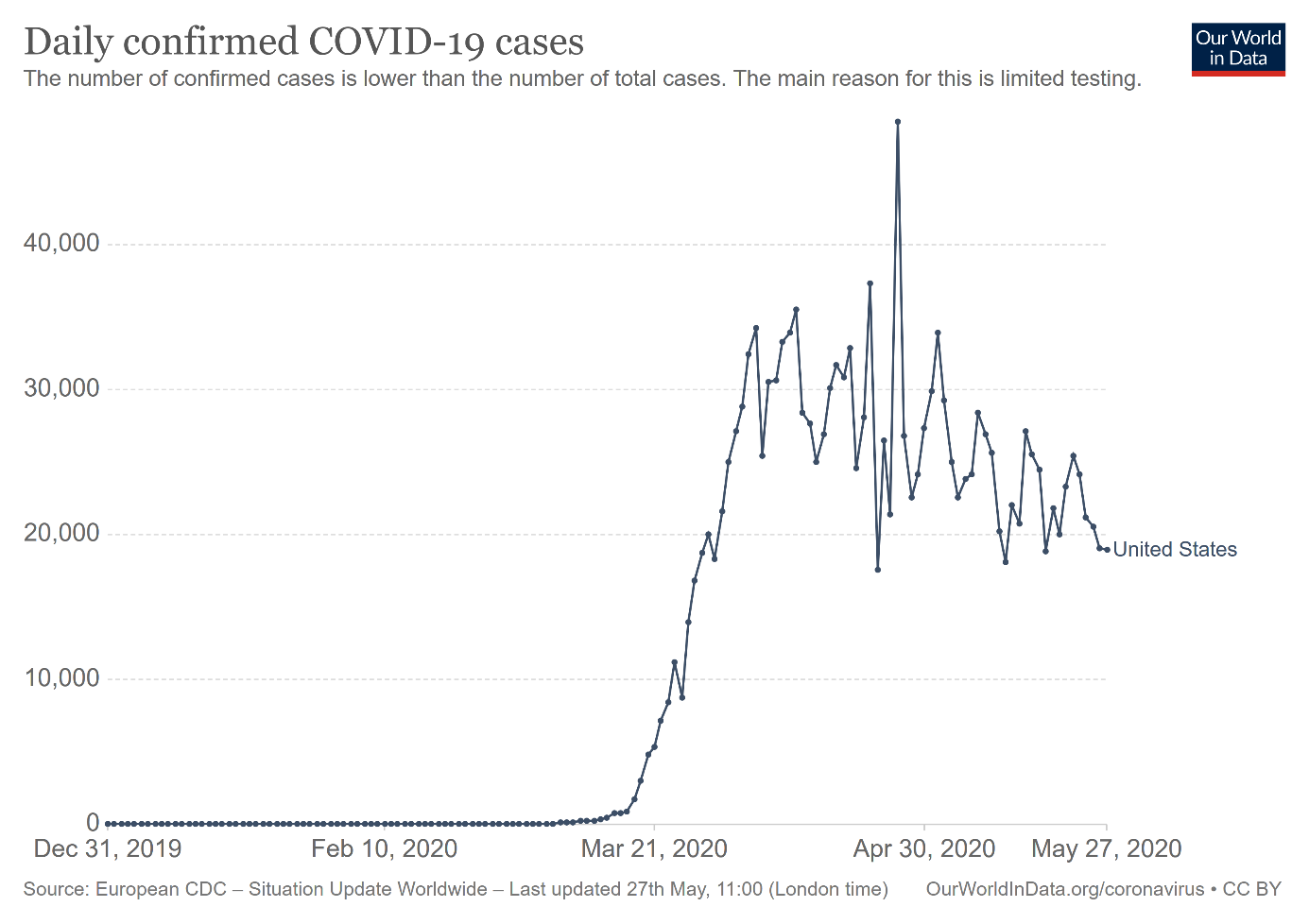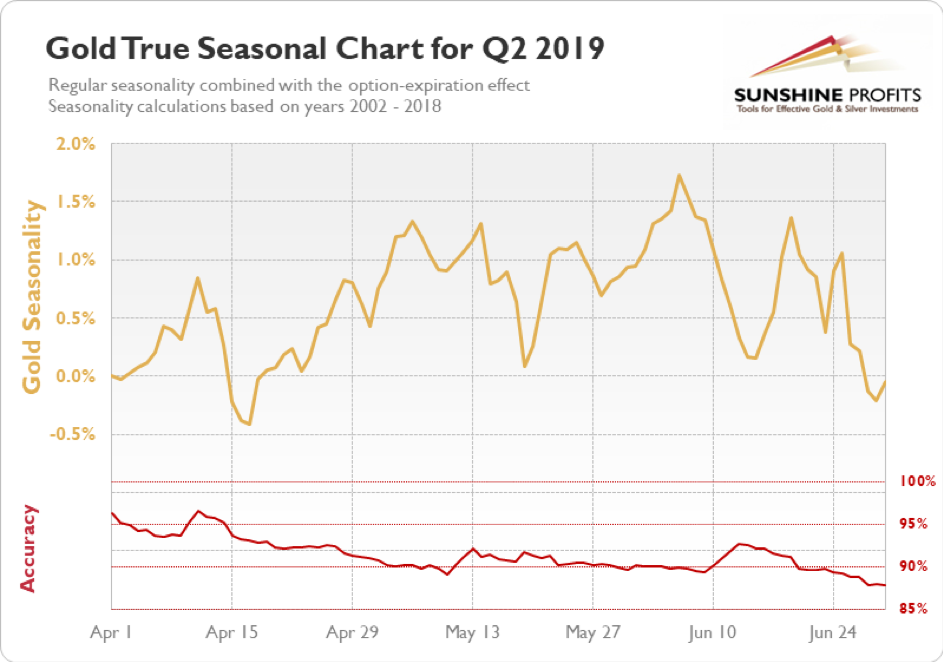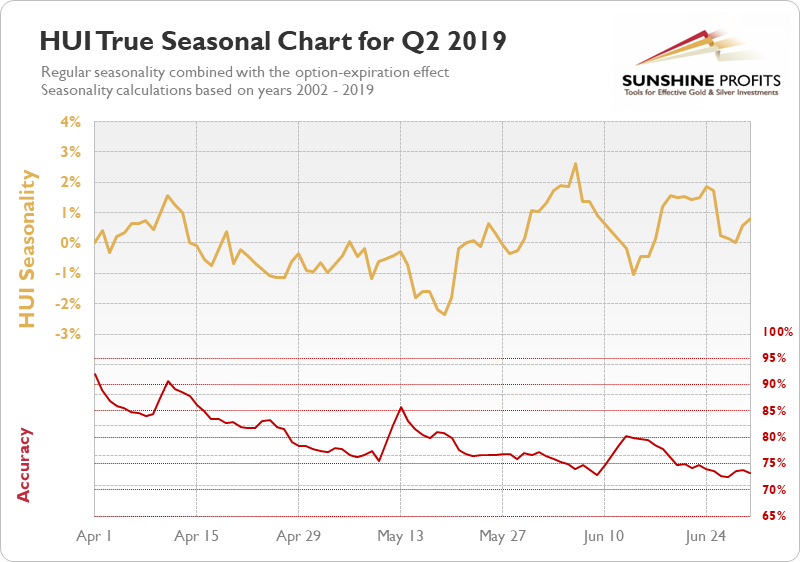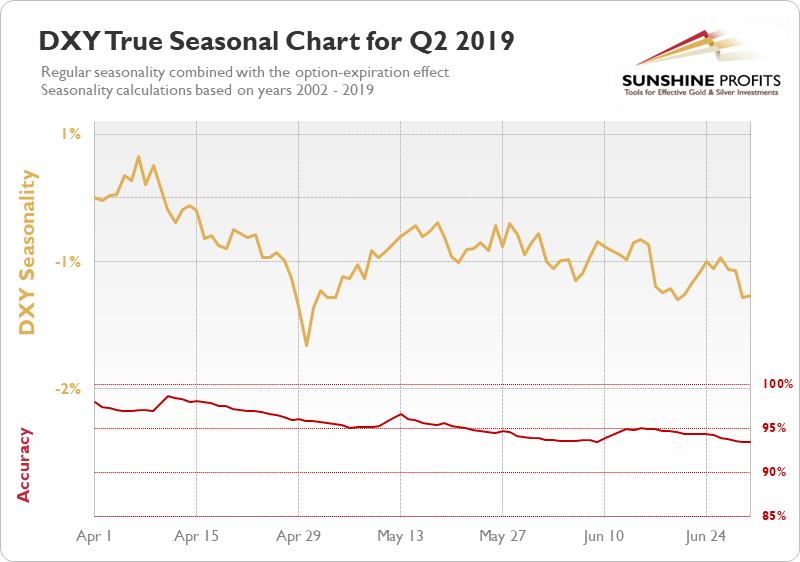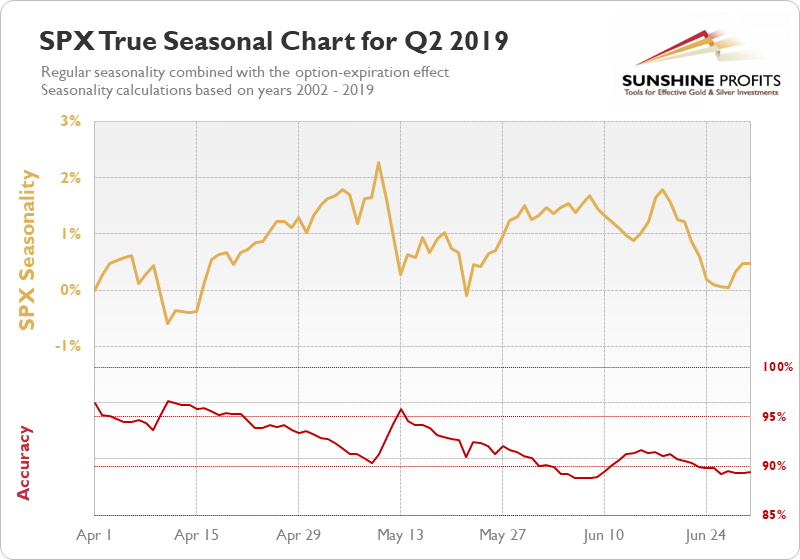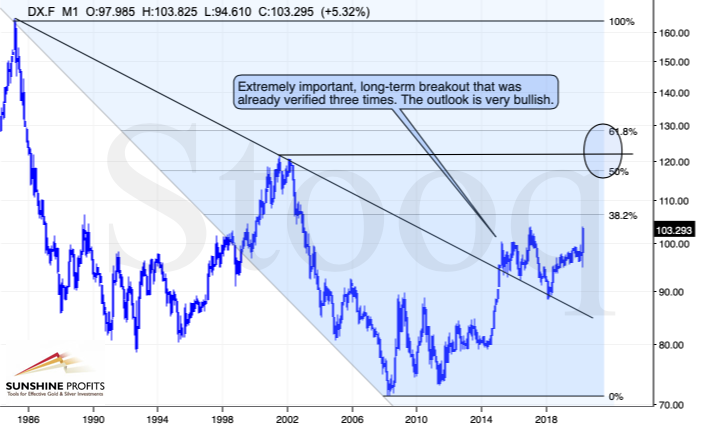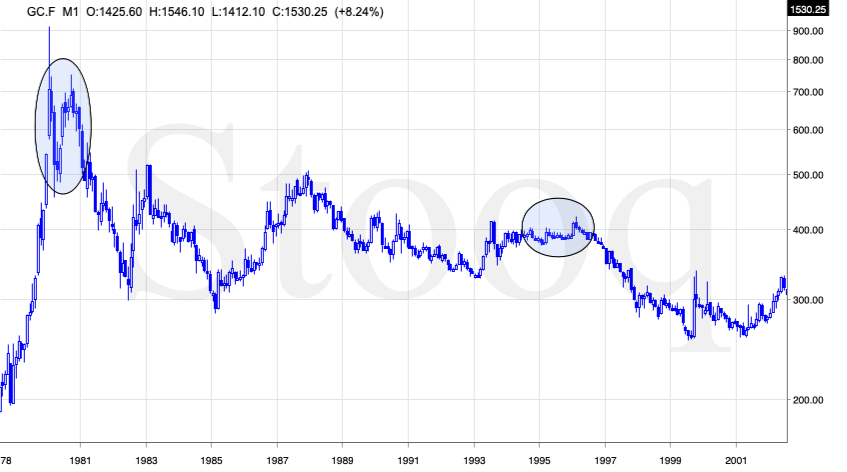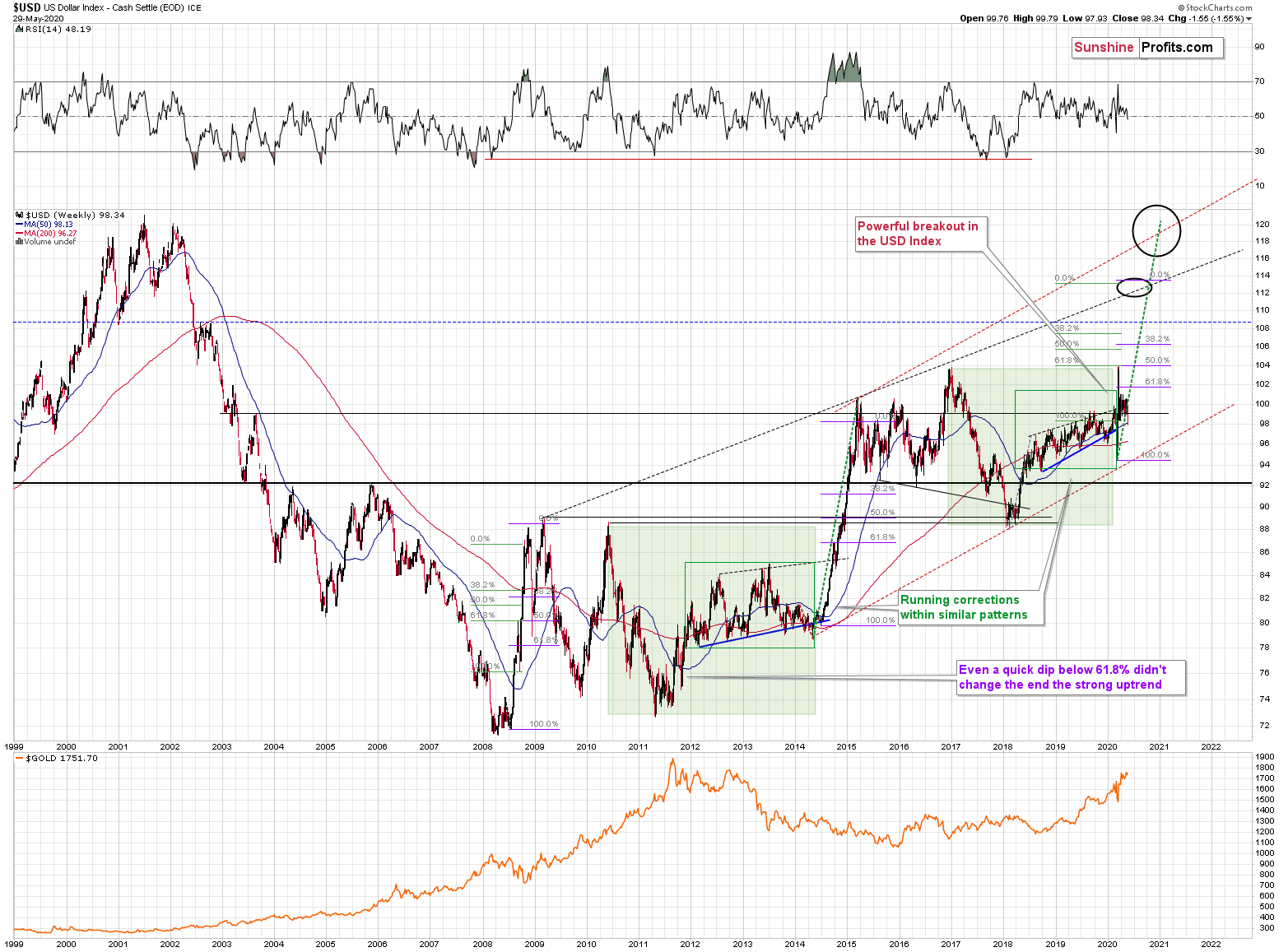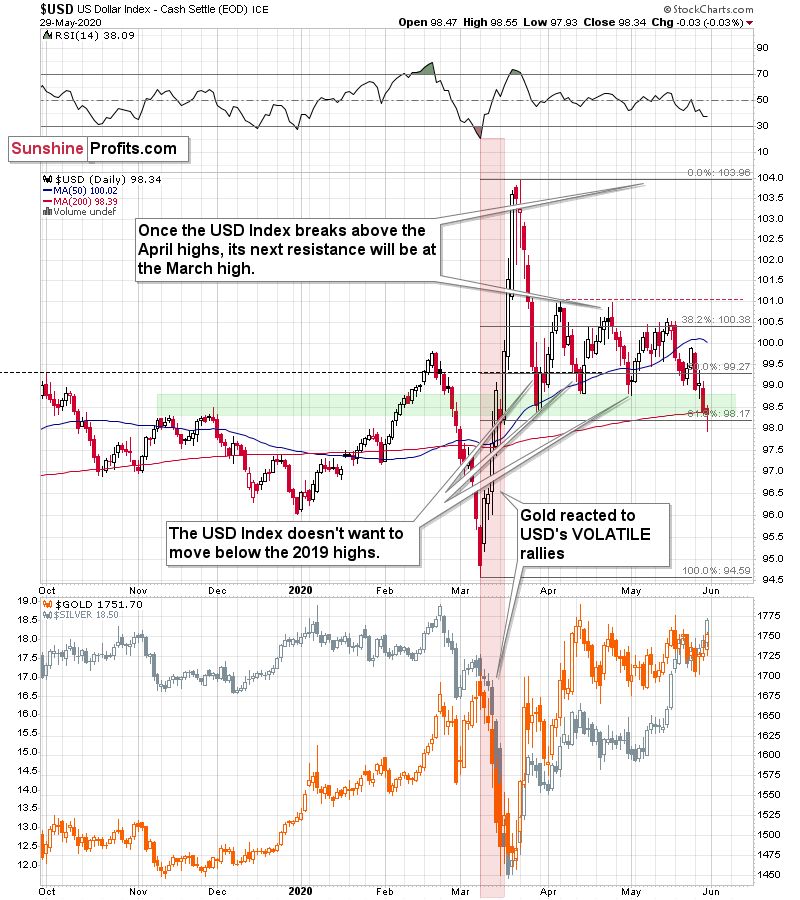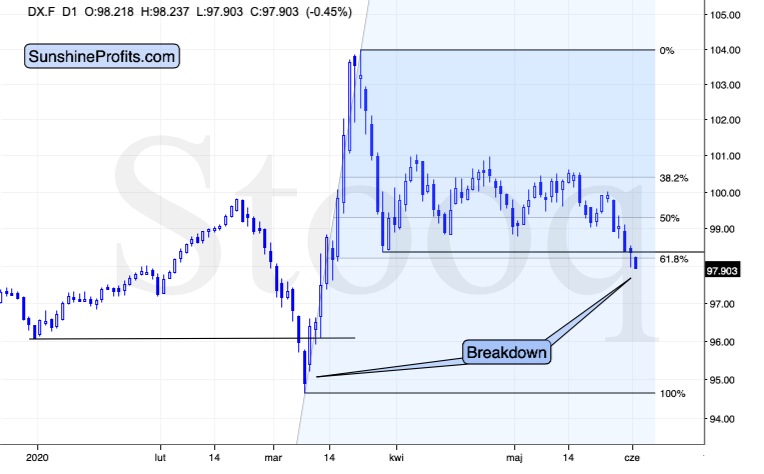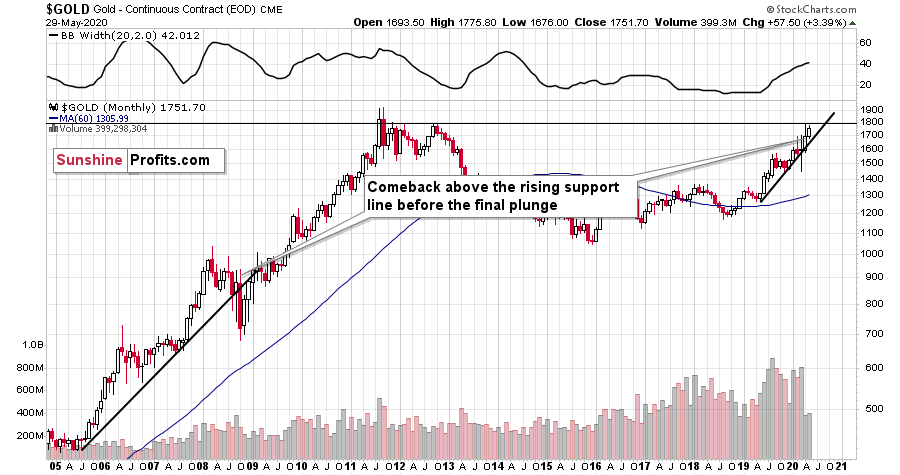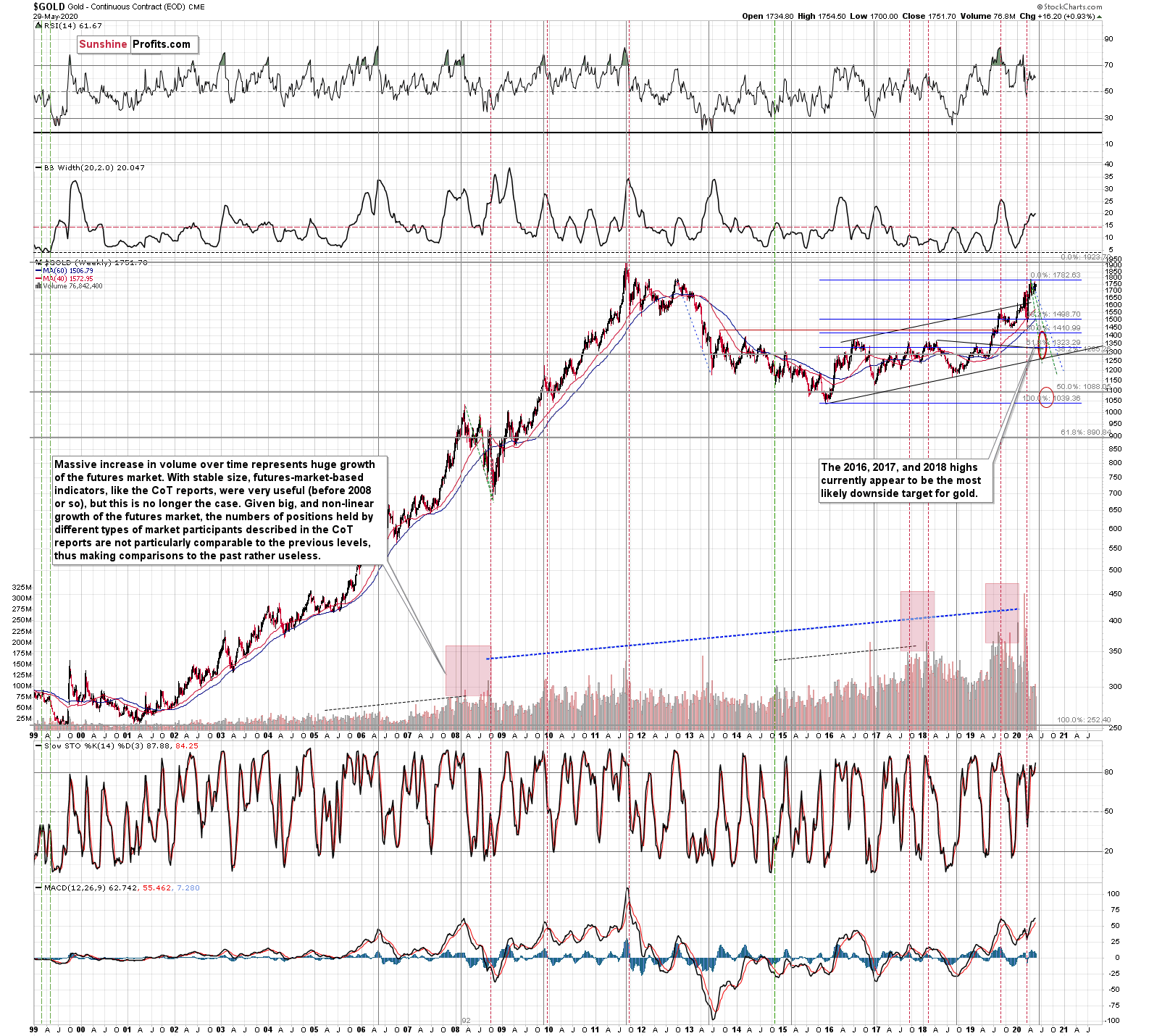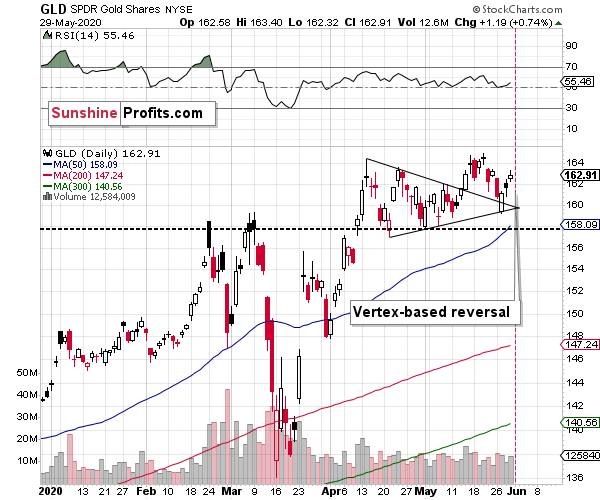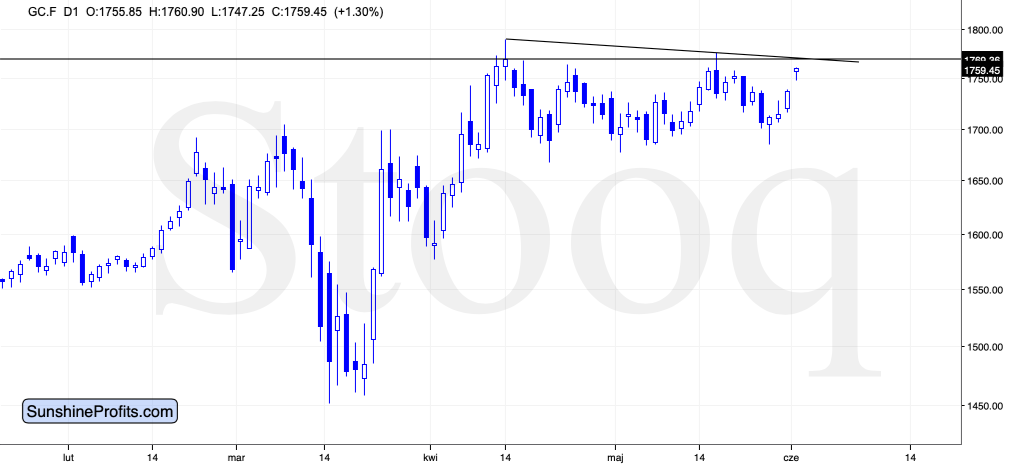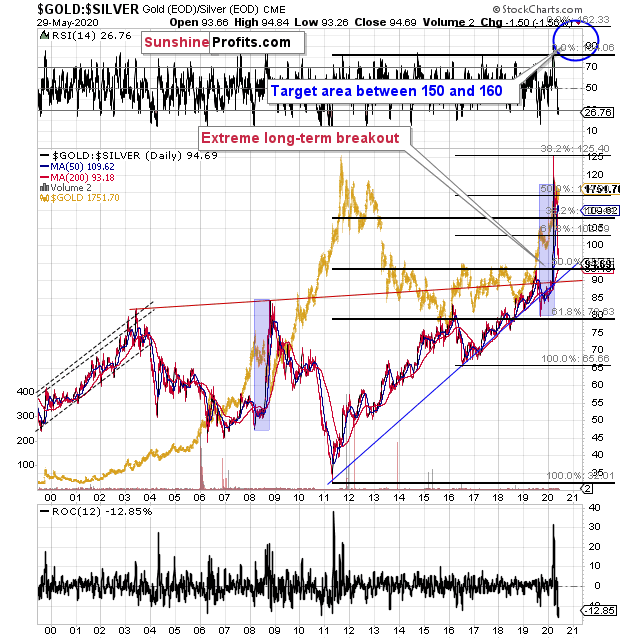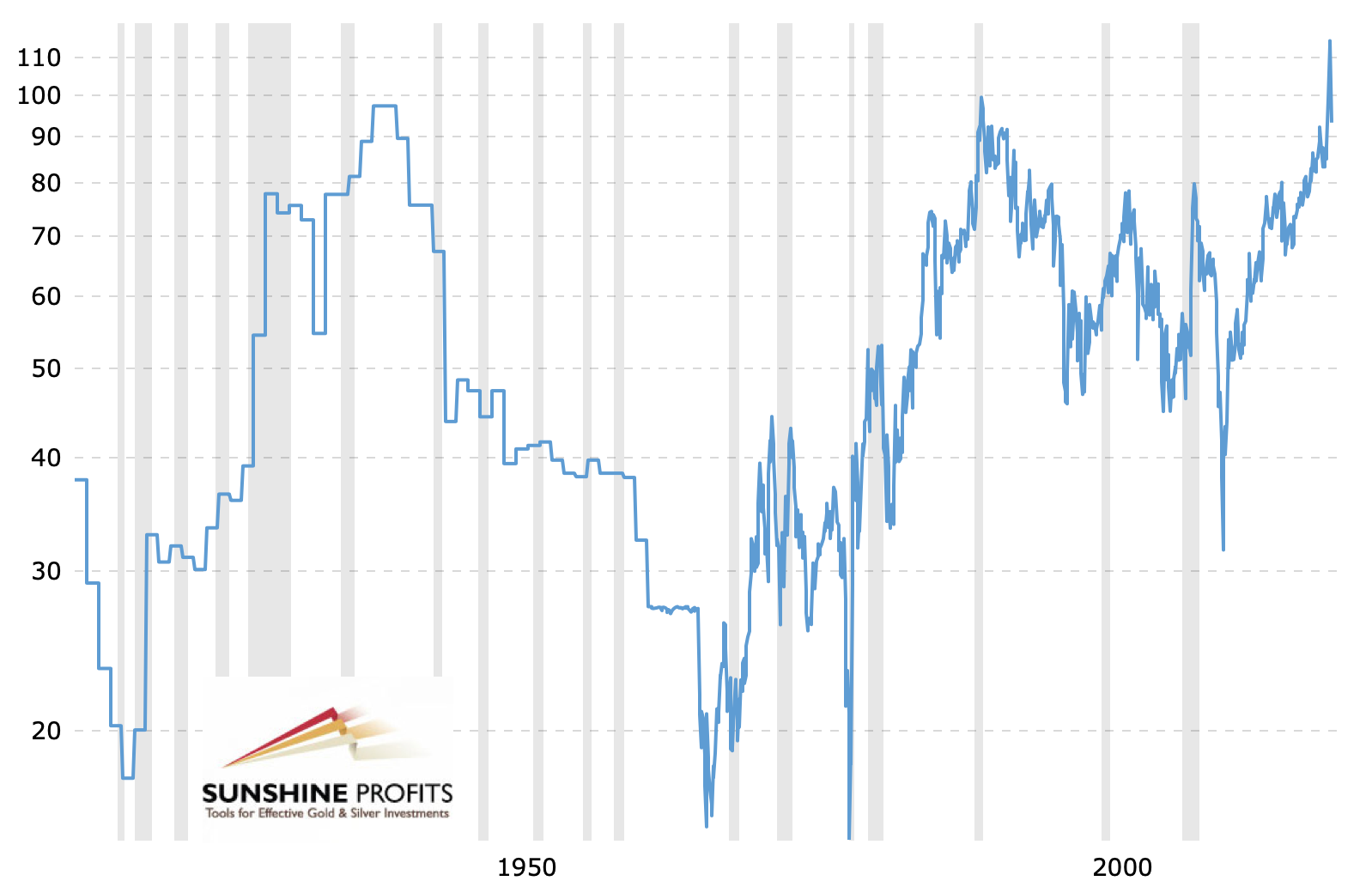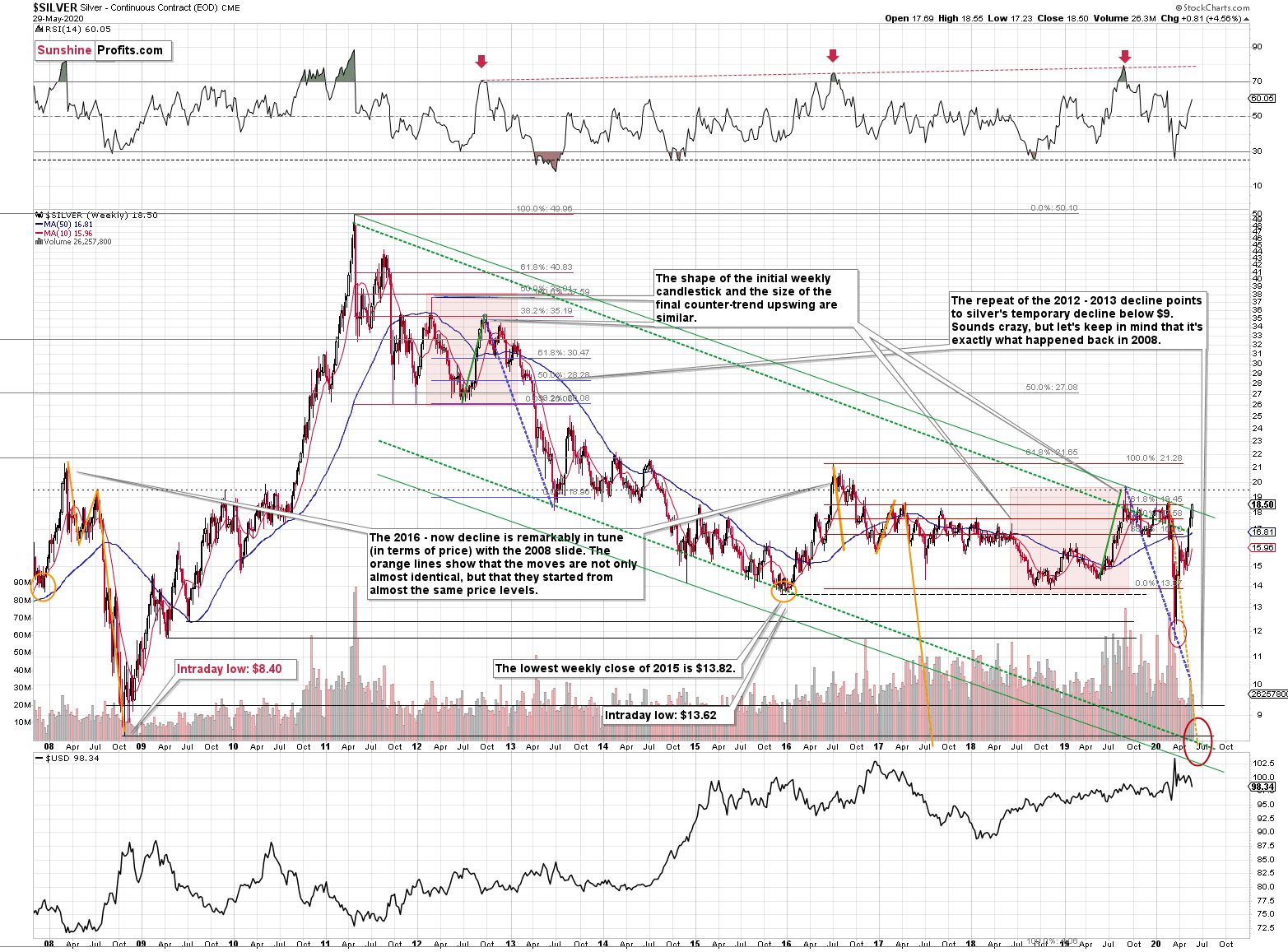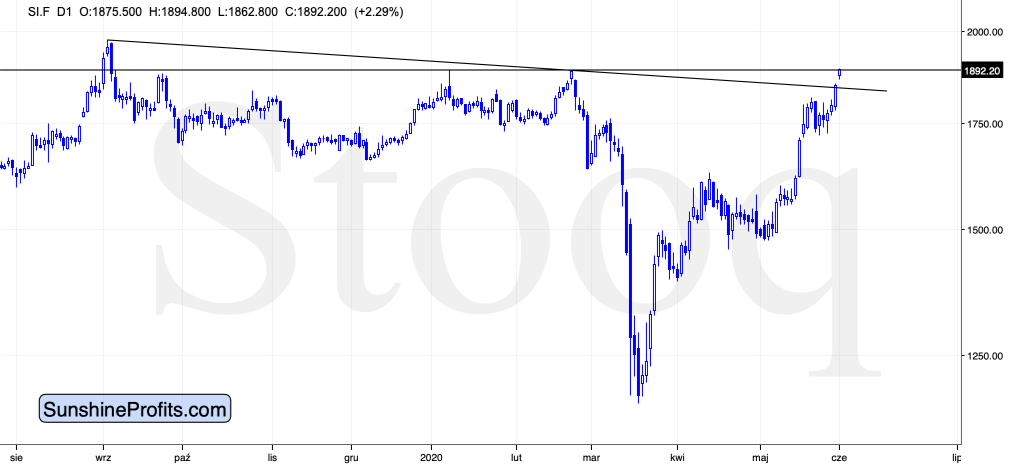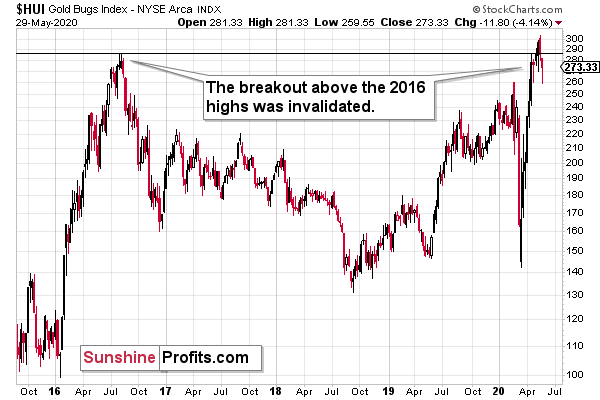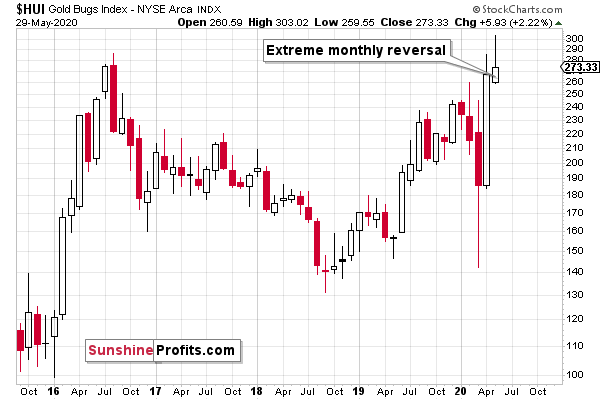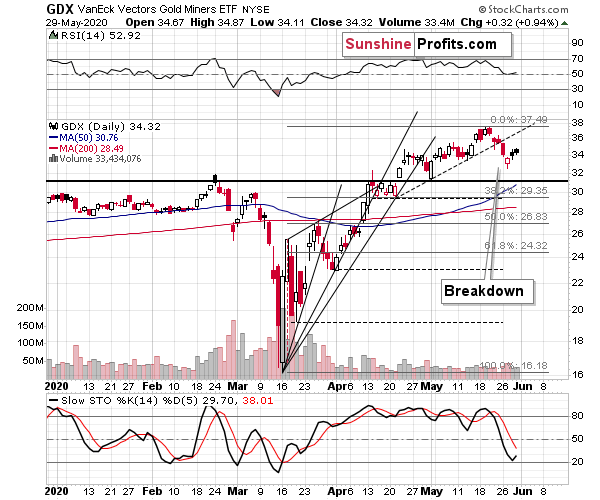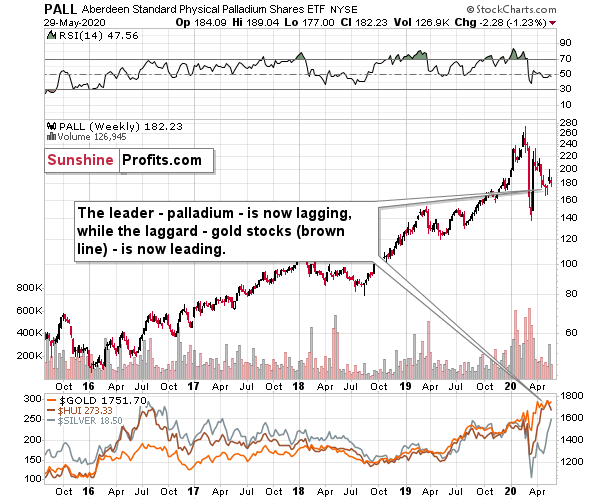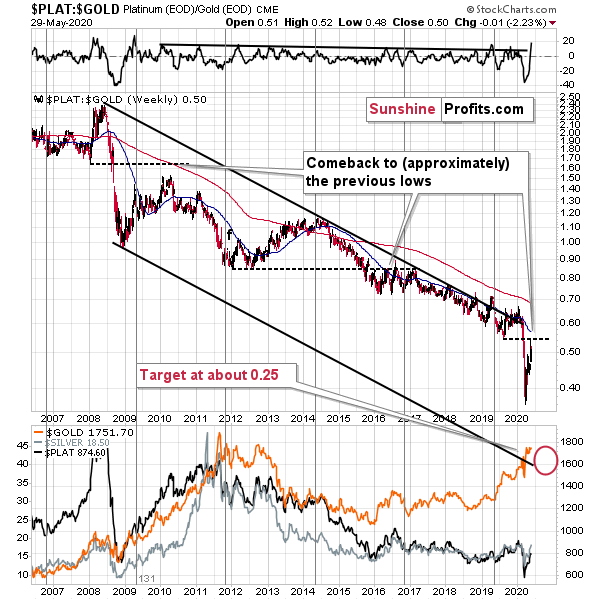Briefly: Outlook for the precious metals market remains bearish for the following few weeks, and bullish for the following months and years.
Welcome to this week's Gold Investment Update.
Some of the most important analogies and long-term trends might have changed, but it's too early to say so, and most of our previous extensive comments still remain up-to-date in general.
As it is the case usually, we will quote last week's comments while updating everything that needs to be updated or changed. In the end, the entire below analysis is up-to-date at the moment of publishing. The parts that we didn't change (or changed only insignificantly) since last week, will be put in italics.
The most important fundamental factor right now remains the Covid-19 pandemic and what might be referred to as the Great Lockdown. The official total US death count is about 105k, greatly exceeding the regular flu season deaths, and the official global death toll is about 372k. New cases and the death toll are quickly climbing in the emerging / BRIC economies, which makes the grand total of new daily cases move to new highs on an almost daily basis.
The pandemic is not over, and neither is the Great Lockdown.
So why many people are relaxed, chilling on the beaches, while investors are so bullish? Are they blind to the drama happening right now?
Well, not necessarily. You see, there is a significant geographical divergence. While many richer countries are emerging from lockdowns, the number of new coronavirus cases is rising in poorer countries. As the chart below shows, the share of daily cases in Europe and North America is declining versus South America, Africa and Asia.
In particular, the chart below shows that situation in the US is normalizing. Not that the epidemic is over, but the peak is behind Americans and the trend is downward.
We know that it sounds brutal, but these are the facts. The stock market investors focus on what is happening in Western countries (and China, which is the factory hub for the West, and one of the biggest economies in the world, if not the biggest), shrugging off problems of poorer countries. And the fact is that coronavirus is gradually becoming the problem of developing economies. This is because the pandemic initially moved from China to Europe and then to North America - and only later to less developed countries. Another issue is that the Western countries were better prepared to cope with a pandemic than many poorer countries, so they are slowly containing the pandemic (its first wave at least).
The declining number of confirmed daily cases plus easing restrictions plus hopes for additional economic stimulus triggered expectations for swift recovery from the coronavirus crisis. The rebound is certain, but we would call for more caution. You see, the epidemic is not over, but even if it is, the economy is not likely to quickly return to the pre-pandemic level.
At the very beginning, many people were too complacent about the threat. Then, they overreacted and became too pessimistic. And, now, they can be too optimistic. After all, it's very difficult to live under lockdown and chronic stress for several weeks, so perhaps now some people must be relieved. We understand them, as we are also fed up with social distancing. But just because you close your eyes, it does not make you are invisible. The virus is still among us.
However, and luckily, the new coronavirus will not wipe out humanity and destroy the economy. But the pandemic and lockdown are not events that could be erased. They will leave scars and many businesses will not reopen.
Implications for Gold
What does it all mean for the global economy and the gold market? The pandemic is not over. Actually, it is getting worse as the rising number of infections in poorer countries shows. However, the epidemic is gradually being extinguished in the West. So, investors became more optimistic and started anticipating smooth sailing, although we still do not have a sufficient number of tests, or effective treatment, not to say a vaccine. Nor we have seen any signs of a V-shaped recovery.
When investors become more optimistic, they shift from safe-haven assets such as gold and turn into risky ones. This is a downside risk factor for the gold market. But such a transition could also soften the US dollar, supporting gold. Another supportive drivers are dovish monetary policy and loose fiscal policy, high public debts and negative real interest rates - importantly, these factors are not likely to go away anytime soon. So, gold fundamentals remain positive and they should support the gold price.
Still, while the monetary and fiscal policies, debt and interest rates are factors that make gold's rally likely in the long run, the excessive optimism perhaps caused by a rebound in investors' sentiment (pessimism was too extreme), is a short-term factor. Perhaps what was likely to happen, has already happened.
The USD Index moved lower in the recent days and it might be the case that it moved based on this excessive optimism and the same might have been the case with the move higher in the general stock market. The relative performance of mining stocks and silver confirms the specific emotional status of the market participants. Extreme optimism (relative to what's really happening) is what we see in the final parts of the rally. And that's also when we see disappointing mining stock prices (except very short-term run ups) and strongly outperforming silver.
We saw all that recently, and silver is outperforming also in today's pre-market trading.
However, just because a given price move has just taken place, it doesn't mean that it's automatically likely to be repeated. Many more factors need to be considered.
Let's get back the to key factor - the length of the lockdown and its economic implications. In particular, the latter are likely much worse than the stock market seems to assume. The Lockdown will have to stay in place in one way or the other for quite long, and there are virtually no justified hopes for a vaccine before the end of the year. And even so, many people would likely refuse to take it.
This means that at the same time:
- The overall, fundamental outlook for gold has been, and remains very positive, and it's likely to cause gold to soar in the following months and likely years.
- The fundamental outlook is positive for the US dollar at least in the short run [given that the optimism-driven decline is almost over as the short-term USDX chart seems to suggest], as the BRIC / developing countries are entering much worse periods of the pandemic.
- There's likely to be another wave down in the stock market, as investors seem to be too optimistic regarding the economic implications of what happened in the last few months and what's likely to happen in the following months.
This means that we are still likely to see a repeat of what we saw in March. The extent of the phenomenon that we're about to see (move higher in the USDX and move lower in stocks, PMs, and miners) remains to be seen, however, a move below the March lows remains in the cards.
Based on how high miners have rallied after the bottom, it could be the case that the upcoming slide will ultimately not take them to new lows, but it's too early to say that this outcome is likely. What we can say right away, is that a move higher in the US dollar is very likely to be seen and at some point - despite its early slide - the precious metals sector is likely to stop reacting to additional powerful rallies in the USDX. This factor will be more important in our view than the price levels that gold, silver, and mining stocks reach. Once PMs show the above-mentioned kind of strength, the outlook for the sector will become bullish also for the short term.
In other words, what would make the outlook bullish is not a rally by itself, but the stop in the decline. The stop that we theoretically should not see when the USD Index keeps soaring. As the USD Index has been consolidating so far, we haven't seen the above kind of performance just yet.
Last week, we wrote that gold (seasonally) and gold miners (seasonally) tend to top in early June, so it might be the case that we would see another attempt to move higher here, and then the decline would take place during June. While the rally was almost absent in case of mining stocks, we definitely saw it in case of gold and silver. And we're seeing it also today. Since today is the first day of June, we can expect the precious metals sector to top shortly due to the above-mentioned seasonal tendencies.
Interestingly, there were usually two triggers for these moves: one from the USD Index, and the other from the stock market.
The USDX (seasonally) tends to bottom in early June, while stocks (seasonally) tend to form a local top. These moves are not huge, though, and the accuracy for the seasonality-based forecasts is lowest in the entire quarter.
Let's look for more precise signals elsewhere, but before we move there, we would like to remind you about the importance of the USD Index for gold price analysis. If the USD Index is about to move much higher gold almost has to slide, at least temporarily.
The Big Picture View of the USD Index
The 2014-2015 rally caused the USD Index to break above the declining very-long-term resistance line, which was verified as support three times. This is a textbook example of a breakout and we can't stress enough how important it is.
The most notable verification was the final one that we saw in 2018. Since the 2018 bottom, the USD Index is moving higher and the consolidation that it's been in for about a year now is just a pause after the very initial part of the likely massive rally that's coming.
If even the Fed and the U.S. President can't make the USD Index decline for long, just imagine how powerful the bulls really are here. The rally is likely to be huge and the short-term (here: several-month long) consolidation may already be over.
There are two cases on the above chart when the USD Index was just starting its massive rallies: in the early 1980s and in mid-90s. What happened in gold at that time?
Gold Performance When the USD Index Soars
These were the starting points of gold's most important declines of the past decades. The second example is much more in tune with the current situation as that's when gold was after years of prolonged consolidation. The early 1980s better compare to what happened after the 2011 top.
Please note that just as what we saw earlier this year, gold initially showed some strength - in February 1996 - by rallying a bit above the previous highs. The USD Index bottomed in April 1995, so there was almost a yearly delay in gold's reaction. But in the end, the USD - gold relationship worked as expected anyway.
The USD's most recent long-term bottom formed in February 2018 and gold seems to have topped right now. This time, it's a bit more than a year of delay, but it's unreasonable to expect just one situation to be repeated to the letter given different economic and geopolitical environments. The situations are not likely to be identical, but they are likely to be similar - and they indeed are.
What happened after the February 1995 top? Gold declined and kept on declining until reaching the final bottom. Only after this bottom was reached, a new powerful bull market started.
Please note that the pace at which gold declined initially after the top - in the first few months - was nothing to call home about. However, after the initial few months, gold's decline visibly accelerated.
Let's compare the sizes of the rallies in the USDX and declines in gold. In the early 80s, the USDX has almost doubled in value, while gold's value was divided by the factor of 3. In the mid-90s, the USDX rallied by about 50% from its lows, while gold's value was divided by almost 1.7. Gold magnified what happened in the USD Index in both cases, if we take into account the starting and ending points of the price moves.
However, one can't forget that the price moves in USD and in gold started at different times - especially in the mid-90s! The USDX bottomed sooner, which means that when gold was topping, the USDX was already after a part of its rally. Consequently, when gold actually declined, it declined based on only part of the slide in the USDX.
So, in order to estimate the real leverage, it would be more appropriate to calculate it in the following way:
- Gold's weekly close at the first week of February 1996: $417.70
- USDX's weekly close at the first week of February 1996: 86.97
- Gold's weekly close at the third week of July 1999: $254.50
- USDX's weekly close at the third week of July 1999: 103.88
The USD Index gained 19.44%
Gold lost 39.07% (which means that it would need to gain 64.13% to get back to the $417.70).
Depending on how one looks at it, gold actually multiplied USD's moves 2-3 times during the mid-90 decline.
And in the early 1980s?
- Gold's weekly close at the third week of January 1980: $845
- USDX's weekly close at the third week of January 1980: 85.45
- Gold's weekly close at the third week of June 1982: $308.50
- USDX's weekly close at the third week of June 1982: 119.01
The USD Index gained 39.27%
Gold lost 63.49% (which means that it would need to gain 173.91% to get back to $845).
Depending on how one looks at it, gold actually multiplied USD's moves by 1.6 - 4.4 times during the early-80 decline.
This means that just because one is not using U.S. dollars as their primary currency, it doesn't result in being safe from gold's declines that are accompanied by USD's big upswings.
In other words, the USD Index is likely to soar, but - during its decline - gold is likely to drop even more than the USD is going to rally, thus falling in terms of many currencies, not just the U.S. dollar.
Please note that there were wars, conflicts and tensions between 1980 and 2000. And the key rule still applied. Huge rallies in the USD Index mean huge declines in gold. If not immediately, then eventually.
Having covered the most important factor for the USD Index and gold, let's take a look at the other - also important - factors influencing both of these markets.
More on the USD Index and Gold
The USD Index was previously (for the entire 2019 as well as parts of 2018 and 2020) moving up in a rising trend channel (all medium-term highs were higher than the preceding ones) that formed after the index ended a very sharp rally. This means that the price movement within the rising trend channel was actually a running correction, which was the most bullish type of correction out there.
If a market declines a lot after rallying, it means that the bears are strong. If it declines a little, it means that bears are only moderately strong. If the price moves sideways instead of declining, it means that the bears are weak. And the USD Index didn't even manage to move sideways. The bears are so weak, and the bulls are so strong that the only thing that the USD Index managed to do despite Fed's very dovish turn and Trump's calls for lower USD, is to still rally, but at a slower pace.
We previously wrote that the recent temporary breakdown below the rising blue support line was invalidated, and that it was a technical sign that a medium-term bottom was already in.
The USD Index soared, proving that invalidation of a breakdown was indeed an extremely strong bullish sign.
Interestingly, that's not the only medium-term running correction that we saw. What's particularly interesting is that this pattern took place between 2012 and 2014 and it was preceded by the same kind of decline and initial rebound as the current running correction.
The 2010 - 2011 slide was very big and sharp, and it included one big corrective upswing - the same was the case with the 2017 - 2018 decline. They also both took about a year. The initial rebound (late 2011 and mid-2018) was sharp in both cases and then the USD Index started to move back and forth with higher short-term highs and higher short-term lows. In other words, it entered a running correction.
The blue support lines are based on short-term lows and since these lows were formed at higher levels, the lines are ascending. We recently saw a small breakdown below this line that was just invalidated. And the same thing happened in early 2014. The small breakdown below the rising support line was invalidated.
Since there were so many similarities between these two cases, the odds are that the follow-up action will also be similar. And back in 2014, we saw the biggest short-term rally of the past 20+ years. Yes, it was bigger even than the 2008 rally. The USD Index soared by about 21 index points from the fakedown low.
The USDX formed the recent fakedown low at about 96. If it repeated its 2014 performance, it would rally to about 117 in less than a year. Before shrugging it off as impossible, please note that this is based on a real analogy - it already happened in the past.
In fact, given this month's powerful run-up, it seems that nobody will doubt the possibility of the USD Index soaring much higher. Based on how things are developing right now, it seems that the USD Index might even exceed the 117 level, and go to 120, or even higher levels. The 120 level would be an extremely strong resistance, though.
Based on what we wrote previously in today's analysis, you already know that big rallies in the USD Index are likely to correspond to big declines in gold. The implications are, therefore, extremely bearish for the precious metals market in the following months.
On the short-term note, it seems that the USD Index has finished or almost finished its breather after the powerful run-up. While the base for the move may be similar to what happened between 2010 and 2014, the trigger for this year's sharp upswing was similar to the one from 2008. In both cases, we saw dramatic, and relatively sudden rallies based on investors seeking safe haven. The recent upswing was even sharper than the initial one that we had seen in the second half of 2008. In 2008, the USDX corrected sharply before moving up once again, and it's absolutely no wonder that we saw the same thing also recently.
But a correction after a sharp move absolutely does not imply that the move is over. In fact, since it's so in tune with what happened after initial (!) sharp rallies, it makes the follow-up likely as well. And the follow-up would be another powerful upswing. Just as a powerful upswing in the USD Index triggered gold's slide in 2008 and in March 2020, it would be likely to do the same also in the upcoming days / weeks.
Please note that the 2008 correction could have been used - along with the initial starting point of the rally - to predict where the following rally would be likely to end. The green lines show that the USDX slightly exceeded the level based on the 2.618 Fibonacci extension based on the size of the correction, and the purple lines show that the USDX has approximately doubled the size of its initial upswing.
Applying both techniques to the current situation, provides us with the 113 - 114 as the next target area for the USD Index. A sharp rally to that level (about 13-14 index points) would be very likely to trigger the final sell-off in gold, silver, and mining stocks.
And what about gold's link with the USD Index in the short run? Please check how the March slide started. It started with a decline in the USD Index to which gold reacted to a very limited extent. The USDX kept on sliding, while gold just moved to its previous highs and then invalidated this breakout. Gold miners were underperforming during this time and they didn't even move close to their previous highs.
That's similar to what we see right now, with the difference being that the moves are not as volatile. Well, it's no wonder that they aren't as volatile as back in March, the coronavirus scare was just starting, and now it's all known. While the economic damage is much greater than the market seems to appreciate, and in my opinion, stocks are going to slide again, the emotional reaction is not as significant this time. This doesn't mean that the USD Index won't soar - I think that it will, but the intraday moves might not be as big as they were previously, at least initially.
Consequently, it might be useful to look at similarities while keeping the above difference in mind. Earlier this year, the USD Index broke below its 50-day moving average, then paused and then declined again for a few days. Then the decline ended, and the powerful rally started. That was the rally that triggered the biggest slides in PMs and miners.
Now, the USD Index is also after a breakdown below the 50-day moving average, after a pause, and after an additional decline.
Back in March, the final two days of the decline were when the USDX closed below the previous low, and then it declined sharply on the following day.
Well, on Friday, the USD Index closed below the late-March high and it even moved temporarily below the 61.8% Fibonacci retracement level. It is moving sharply lower today. Of course, it looks bearish at face value, but a very similar situation in March marked the exact bottom.
Here's how the situation looks like right now:
So, will we see a temporary move lower today in the USDX that would then be invalidated as gold plunges? That's what the weak performance of mining stocks seems to be telling us.
Having said that, let's take a more detailed look at gold.
Gold's Long-term View
In short, the long-term analogy in terms of prices to what happened in 2008 still seems somewhat intact:
In 2008, after the initial plunge, and a - failed - intramonth attempt to move below the rising support line, gold came back above it and it closed the month there. The same happened in March 2020.
During the next month in 2008, gold rallied and closed visibly above the rising support line. The same was the case in April, 2020.
In the following month - the one analogous to May 2020 - gold initially moved higher, but then it plunged to new lows and finally closed the month below the rising support line.
We haven't seen the plunge last month, but we did see a move very close to the previous highs, just like what we saw in March. As the volatility is now somewhat smaller, it suggests that instead of seeing the slide in May, we might see it in June. This would also be in tune with the seasonal tendencies that we discussed earlier today.
Let's check how low gold could decline during this slide. In short, the above is based on the long-term gold chart and it hasn't changed this week.
Our current (and it might change in the following days) estimate is that gold would decline to the 2016, 2017, and 2018 lows - slightly below $1,400. Why? Because this level is confirmed by several major highs, which makes it the strongest support that's below the previous 2020 lows.
Moreover, back in 2008, gold bottomed about 8% below its initial September bottom. The recent bottom in gold was about $1,451. If history repeats itself, gold could decline to 92% x $1,451 = about $1,335.
In 2008, gold also declined by about 27% from its previous high. If the history repeats itself here, and gold topped yesterday (which seems quite likely), we can see gold's bottom at 73% x $1,789 = about $1,306.
The 2016, 2017, and 2018 highs are the strongest gold support that we have close to the above-mentioned price levels. Gold's fundamental situation is even better now than it was in 2008, so we think that looking for the support above the above-mentioned 2008-based price levels is more appropriate than basing it the above-mentioned gold trading tips. The 2016, 2017, and 2018 highs fulfill this requirement.
This means that gold would be likely to bottom between about $1,350 and $1,380.
Of course, the above estimates assume that gold would decline significantly and not modestly, when the USD Index does indeed break higher.
The way gold responds to USD's rally from the current levels to the previous 2020 highs should tell us a lot about what's really in store for gold in the following weeks.
Please note that the very long-term cyclical turning point in gold (marked with vertical, gray lines) is due in July. Until the 2011 top, these turning points were tops, and after the 2011 top - in each case - these turning points corresponded to major bottoms. If gold is to bottom in July, it's about time for it to start declining. This factor serves, thus, as a bearish sign.
Having said that, let's take a look at silver. In case of the white metal, its ratio to gold might be more important at this time than price itself.
As far as the short-term is concerned, we have a good indication from the GLD ETF that the rally is about to end today. This is the case due to the triangle-vertex-based reversal that we have right now. This trading technique has proven to be useful many times in the previous months, so it seems to be worth to pay attention to its indications also this time.
Gold futures are just below the combination of two resistance levels: the declining resistance line and the highest daily close of the year. Consequently, it might move even several dollars higher today before topping.
Silver's Strength and Indications
The ratio moved below the 100 level, but the move is so far quite small from the long-term point of view. You can barely see it on the second, long-term chart, and if it wasn't for the dashed lines, it would be hard to tell if the ratio really moved below 100 or not.
If the ratio stays below 100 for longer, we'll confirm that the breakout was indeed invalidated. However, for now, it seems that silver's tendency to outperform in the short term at the top is distorting the technical picture.
We saw something similar in late 2019. The gold to silver ratio broke below its rising support line and the RSI based on it moved below the 30 level. This move was very temporary and the ratio moved much higher shortly. And silver price tumbled.
On a long-term basis, silver reached its declining resistance line and it's still below the levels from which the previous 2020 slide started, at least in terms of the daily closing prices.
Even though silver rallied considerably, it doesn't have to be the case that the link between now and 2008 is broken.
This is the link that we mean:
Silver just plunged to our initial target level and reversed shortly after doing so. It was for many months that we've been featuring the above silver chart along with the analogy to the 2008 slide. People were laughing at us when we told them that silver was likely to slide below $10.
Well, the recent low of $11.64 proves that we were not out of our minds after all. Our initial target was reached, and as we had explained earlier today, the entire panic-driven plunge has only begun.
Those who were laughing the loudest will prefer not to notice that silver reversed its course at a very similar price level at which it had reversed initially in 2008. It was $12.40 back then, but silver started the decline from about 50 cent higher level, so these moves are very similar.
This means that the key analogy in silver (in addition to the situation being similar to mid-90s) remains intact.
It also means that silver is very likely to decline AT LEAST to $9. At this point we can't rule out a scenario in which silver drops even to its all-time lows around $4-$5.
Note: Silver at or slightly below $8 seems most probable at this time.
Crazy, right? Well, silver was trading at about $19 less than a month ago. These are crazy times, and crazy prices might be quite realistic after all. The worst is yet to come.
Let's quote what the 2008-now analogy is all about in case of silver.
There is no meaningful link in case of time, or shape of the price moves, but if we consider the starting and ending points of the price moves that we saw in both cases, the link becomes obvious and very important. And as we explained in the opening part of today's analysis, price patterns tend to repeat themselves to a considerable extent. Sometimes directly, and sometimes proportionately.
The rallies that led to the 2008 and 2016 tops started at about $14 and we marked them both with orange ellipses. Then both rallies ended at about $21. Then they both declined to about $16. Then they both rallied by about $3. The 2008 top was a bit higher as it started from a bit higher level. And it was from these tops (the mid-2008 top and the early 2017 top) that silver started its final decline.
In 2008, silver kept on declining until it moved below $9. Right now, silver's medium-term downtrend is still underway. If it's not clear that silver remains in a downtrend, please note that the bottoms that are analogous to bottoms that gold recently reached, are the ones from late 2011 - at about $27. Silver topped close to $20.
The white metal hasn't completed the decline below $9 yet, and at the same time it didn't move above $19 - $21, which would invalidate the analogy. This means that the decline below $10, perhaps even below $9 is still underway.
Now, some may say that back in 2008, silver rallied only to about $14 and since now it rallied to about $16, so the situation is now completely different and that the link between both years is broken. But that's simply not true.
The nominal price levels are just one of the ways that one should look at the analogy - far from being the perfect or most important one.
Please note that back in 2008, there were two smaller bottoms in silver, and this time we saw just one. The decline before the bottom was sharper, so is it really that surprising that the rebound was sharper as well? Silver ended the 2008 corrective upswing once it moved visibly above the declining orange line and that's exactly what happened recently. It also topped once it reached its 10-week moving average (red line). That's exactly what just happened. This MA is at $15.81 and at the moment of writing these words, silver is back below it, trading at $15.65.
The situations are not perfectly identical in terms of nominal prices, but they remain remarkably similar given how different fundamental reasons are behind these price moves (in reality, what's behind both declines is fear that - itself - doesn't change).
The technique used for predicting silver price is clearer than the one that we applied for gold, so it seems useful to look not only at the USD Index for signs, but also at the white metal itself. Once silver moves to $8 or below it, it will likely serve as a strong buy sign for gold, regardless of the price at which gold will be trading at that time.
The 2020 slide was sharper, so it's not that surprising that the rebound was also more notable. Besides, the breakout above the 100 level in the gold to silver ratio and is a small feat either. The comeback to the previously broken 100 level in the ratio is normal, so given gold's recent rally, silver's rally in the last few weeks is not that ground-breaking either.
On a very short-term basis, we saw that silver moved a few cents above the previous 2020 high and then moved back below them. This is important for two reasons:
- It's a small breakout that was already invalidated and silver is known for its bearish "fakeouts".
- In February, silver topped by moving temporarily above the January 2020 high and then invalidating that breakout. That was the final signal that started the profound slide.
As a result, we don't view this upswing as something bullish, especially that we had previously written about the possibility of seeing a bit more short-term strength in silver, while the miners continue to underperform.
Consequently, while the 2008-now analogy in terms of price is no longer as clear as it used to be, the breakout in the gold to silver ratio above 100 level is what makes up for the above in terms of overall bearishness of the medium-term silver price developments. And weakness in mining stocks confirms it.
And speaking of the mining stocks, let's take a closer look at their performance.
Gold Miners' and Their 2016 High
The laser-precision technique that tells us whether the precious metals market is going to move higher or lower, could take form of a confirmation or invalidation of a major breakout. And we just had the make-or-break situation in gold mining stocks. We previously described the above HUI Index - flagship proxy for the gold miners - in the following way:
The HUI Index declined significantly, and then it rebounded significantly.
Both are likely linked. Miners first declined more sharply than they did in 2008, so the rebound was also sharper. Based on the stimulus and gold reaching new yearly highs, miners also rallied, and tried to move to new yearly highs. It's not surprising.
However, if the general stock market is going to decline significantly one more time, and so will gold - and as you have read above, it is very likely - then miners are likely to slide once again as well. This would be in tune with what happened in 2008.
At this time, it may seem impossible or ridiculous that miners could slide below their 2015 lows, but that's exactly what could take place in the following weeks. With gold below their recent lows and the general stock market at new lows, we would be surprised not to see miners even below their 2020 lows. And once they break below those, their next strong resistance is at the 2016 low. However, please note that miners didn't bottom at their previous lows in 2008 - they moved slightly lower before soaring back up.
Please note that the HUI Index just moved to its 2016 high which serves as a very strong resistance. Given the likelihood of a very short-term (1-2 days?) upswing in stocks and perhaps also in gold (to a rather small extent, but still), it could be the case that gold miners attempt to rally above their 2016 high and... Spectacularly fail, invalidating the move. This would be a great way to start the next huge move lower.
And what happened last week?
The HUI Index invalidated the breakout above its 2016 high in terms of the weekly closing prices and also in terms of the monthly closing prices.
This is a perfectly bearish sign, especially since the HUI Index has been forming an extremely clear monthly shooting star candlestick. This is a clear formation with clear implications - gold miners are likely to decline in June.
It's important to note that on a daily basis, miners have barely moved higher on Friday. They had a good reason to do so - even two reasons. Both: general stock market and - most importantly - gold / GLD moved higher so miners should have rallied as well. They didn't, which shows that they are much more likely to decline in the short term instead.
Combining two key gold trading tips: silver's exceptional strength with miners' exceptional weakness provides us with a great trading opportunity.
Before summarizing, let's take a look at the lesser-known parts of the precious metals sector: platinum and palladium.
PGM Group Indications
The interesting detail is palladium's weakness. This precious metal was the one that soared most profoundly in the past few years and while it recovered some of its 2020 declines recently, it appears to be back in bearish mode as its unable to keep gained ground, even despite the move higher in the general stock market.
The previous leader is now definitely lagging. And you know what is leading now? Silver - as it usually does in the final part of the upswing. When leaders are lagging, and laggards are leading, one should recognize that the market is topping - and that's the key take-away from the palladium and platinum analysis right now.
Palladium was the leader and platinum was actually one of the laggards. Palladium was down by 0.43 last week. And what did platinum do?
Platinum recently moved higher relative to gold, showing exceptional "strength". The laggard is leading the way - very toppy action.
The long-term downtrend in the platinum to gold ratio has fundamental legs - the little silver (as that's what platina means) is suffering from declining demand from the automotive industry. The diesel engines, where platinum is used as a catalyst, give way to gasoline engines and electric cars. But that's just the long-term trend. There are local trends around the main trend and the interesting pattern in them was that once the platinum to gold ratio broke below the previous lows, it then moved back closer to them, to kind of "wave goodbye".
It seems that we saw this phenomenon right now as the ratio moved to the 2019 low and then moved a bit lower. As the breakdown was verified, the ratio could now turn lower once again. The big slide that we saw earlier this year took place at the same time when stocks, silver, miners, and gold declined, as the USDX soared. Platinum seems to be telling us to be prepared for another wave lower, also in gold - and we are.
Summary
Summing up, despite the very recent moves higher, especially in silver, the outlook for the precious metals market is bearish for the next few weeks, and it's very bullish for the following months. Even if gold, silver, and mining stocks are not going to move to new 2020 lows, they are still likely to decline visibly when the USD Index soars.
Based on silver's extreme outperformance, gold miners' extreme weakness, the clear monthly reversal in the latter and their invalidation of the breakout above the 2016 highs, the triangle-based reversal in the GLD ETF, the specific situation in the USD Index, and the general seasonal tendencies it seems that we won't have to wait for much longer for the next wave down to start also (it seems to be underway in case of miners) in gold and silver.
After the sell-off (that takes gold below $1,400), we expect the precious metals to rally significantly. The final decline might take as little as 1-3 weeks, so it's important to stay alert to any changes.
Most importantly - stay healthy and safe. We made a lot of money on the March decline and the subsequent rebound (its initial part) price moves (and we'll likely make much more in the following weeks and months), but you have to be healthy to really enjoy the results.
To summarize:
Very short-term outlook for the precious metals sector (our opinion on the next 2-3 weeks): Bearish
Short-term outlook for the precious metals sector (our opinion on the next 2 months): Bearish for about 2-3 weeks, and then bullish once again
Medium-term outlook for the precious metals sector (our opinion on the period between 2 and 6 months from now): Bullish
Long-term outlook for the precious metals sector (our opinion on the period between 6 and 24 months from now): Bullish
Very long-term outlook for the precious metals sector (our opinion on the period starting 2 years from now): Bullish
Our preferred ways to invest in and to trade gold along with the reasoning can be found in the how to buy gold section. Additionally, our preferred ETFs and ETNs can be found in our Gold & Silver ETF Ranking.
As a reminder, Gold Investment Updates are posted approximately once per week. We are usually posting them on Monday, but we can't promise that it will be the case each week.
Please note that this service does not include daily or intraday follow-ups. If you'd like to receive them, we encourage you to subscribe to our Gold & Silver Trading Alerts today.
Thank you.
Sincerely,
Przemyslaw Radomski, CFA
Editor-in-chief, Gold & Silver Fund Manager


